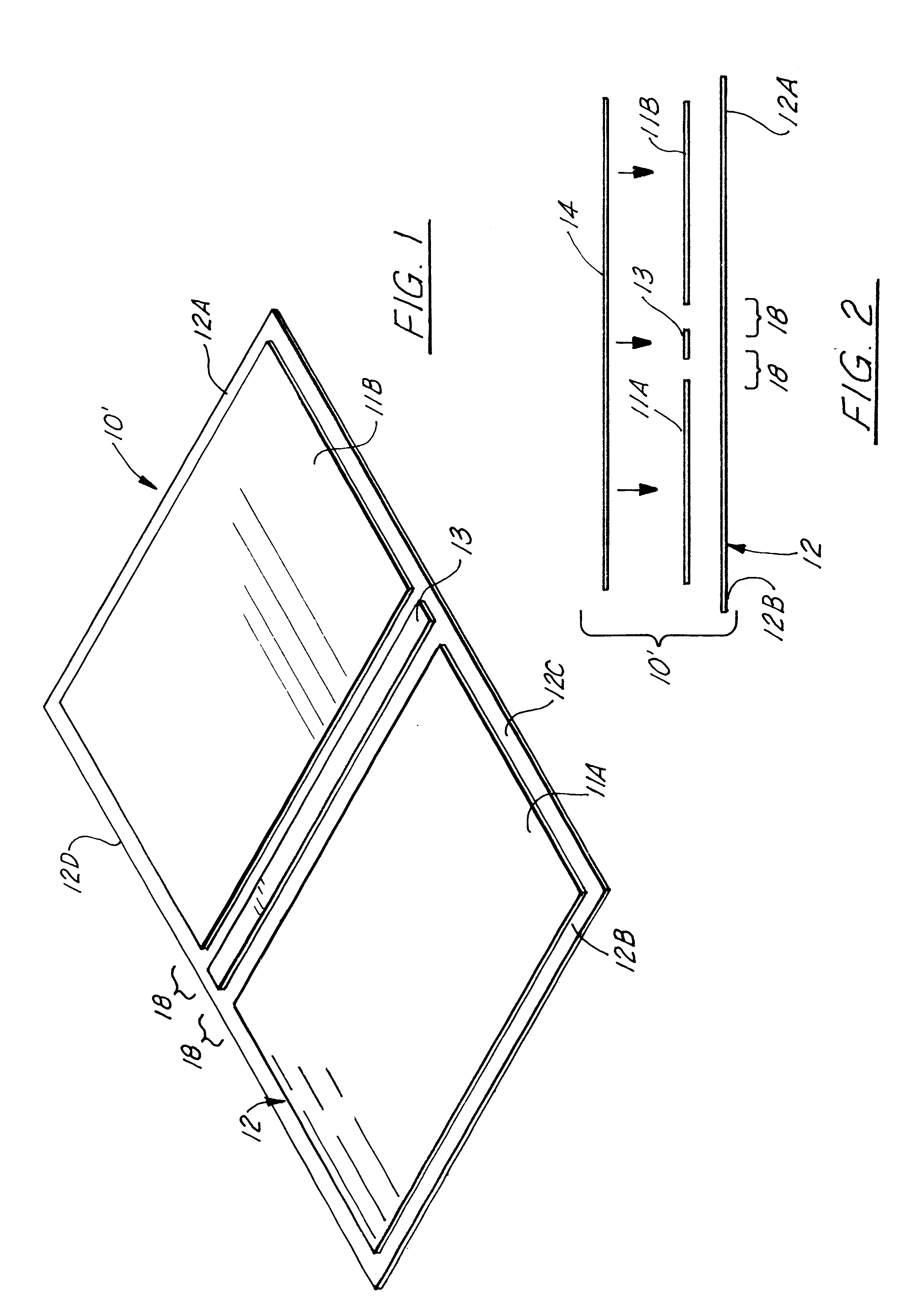Binder assembly system employing an integral, book-like cover and adhesive channel
- Summary
- Abstract
- Description
- Claims
- Application Information
AI Technical Summary
Benefits of technology
Problems solved by technology
Method used
Image
Examples
Embodiment Construction
As can be seen in FIGS. 1 & 2, the exemplary embodiment of the "hard-bound" book-like, binder cover 10' (in its final form numbered 10) of the invention includes a number of main, structural parts, including two, side boards 11A & 11B, an exterior sheet 12 of book covering material and, optionally, a centrally located, special paper spine element 13, used to make up the final "hard-bound" book-like, binding cover 10. As can be seen in FIG. 1, the sides of the paper spine element 13 are positioned adjacent to but spaced from the sides of the boards 11A & 11B, the three parts being positioned in a parallel array symmetrical about the center-line axis of the paper spine element. A final part is the typically decorative, internal, paper cover 14, which can have a plain exposed side and which over-lies and covers over the combined width of the side boards 11A & 11B and the paper spine element 13, all of which when combined together form the final binder cover 10 in pre-heating and formin...
PUM
 Login to View More
Login to View More Abstract
Description
Claims
Application Information
 Login to View More
Login to View More - R&D
- Intellectual Property
- Life Sciences
- Materials
- Tech Scout
- Unparalleled Data Quality
- Higher Quality Content
- 60% Fewer Hallucinations
Browse by: Latest US Patents, China's latest patents, Technical Efficacy Thesaurus, Application Domain, Technology Topic, Popular Technical Reports.
© 2025 PatSnap. All rights reserved.Legal|Privacy policy|Modern Slavery Act Transparency Statement|Sitemap|About US| Contact US: help@patsnap.com



